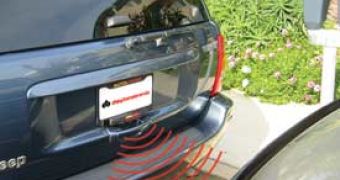Many of today's cars are equipped with state-of-the-art driver assist technologies, like cruise control, anti-lock brakes, automatic transmission and adaptive headlights, designed to do things beyond the natural abilities of human drivers, thus relieving him of some manual operations during complex driving situations.
A more complex type of driver assist technology is currently being researched at IBM, aiming to give the cars some sort of reflexes that would prevent accidents and traffic jams. These active safety devices would allow cars to communicate with one another, exchanging information received through the road infrastructure and satellite transmissions.
So, the cars will be able to take corrective action when the situation demands it but also to provide the driver with vital feedback on potentially dangerous situations. This will transform the car into an intelligent tool that can react to environmental stimuli and adapt to rapidly changing circumstances on the road ahead.
The electronic reflexes will be much faster that those of ordinary people, which could mean cars will be able to drive much closer to each other to improve traffic without endangering the human drivers. Of course, people will always be better than machines and software at analyzing complex situations, so the least these sensors could do is provide more information faster and more accurately, so the human brain will be capable of finding alternatives to a potential crisis before this happens.
"The idea is that the driver always stays in control, but gets additional information to help make judgment calls," says Dan Chevion, initiator of the exploratory research project at the IBM Haifa Research Lab. "With half a billion cars on the road in the western world alone, there's a great opportunity to better regulate traffic flow and reduce congestion."
Some of the ideas to be integrated in the new applications are changes in the throttle pedal pressure or force feedback from the steering wheel, as well as audio and visual warnings about incoming traffic jams, slippery roads or accidents.

 14 DAY TRIAL //
14 DAY TRIAL //